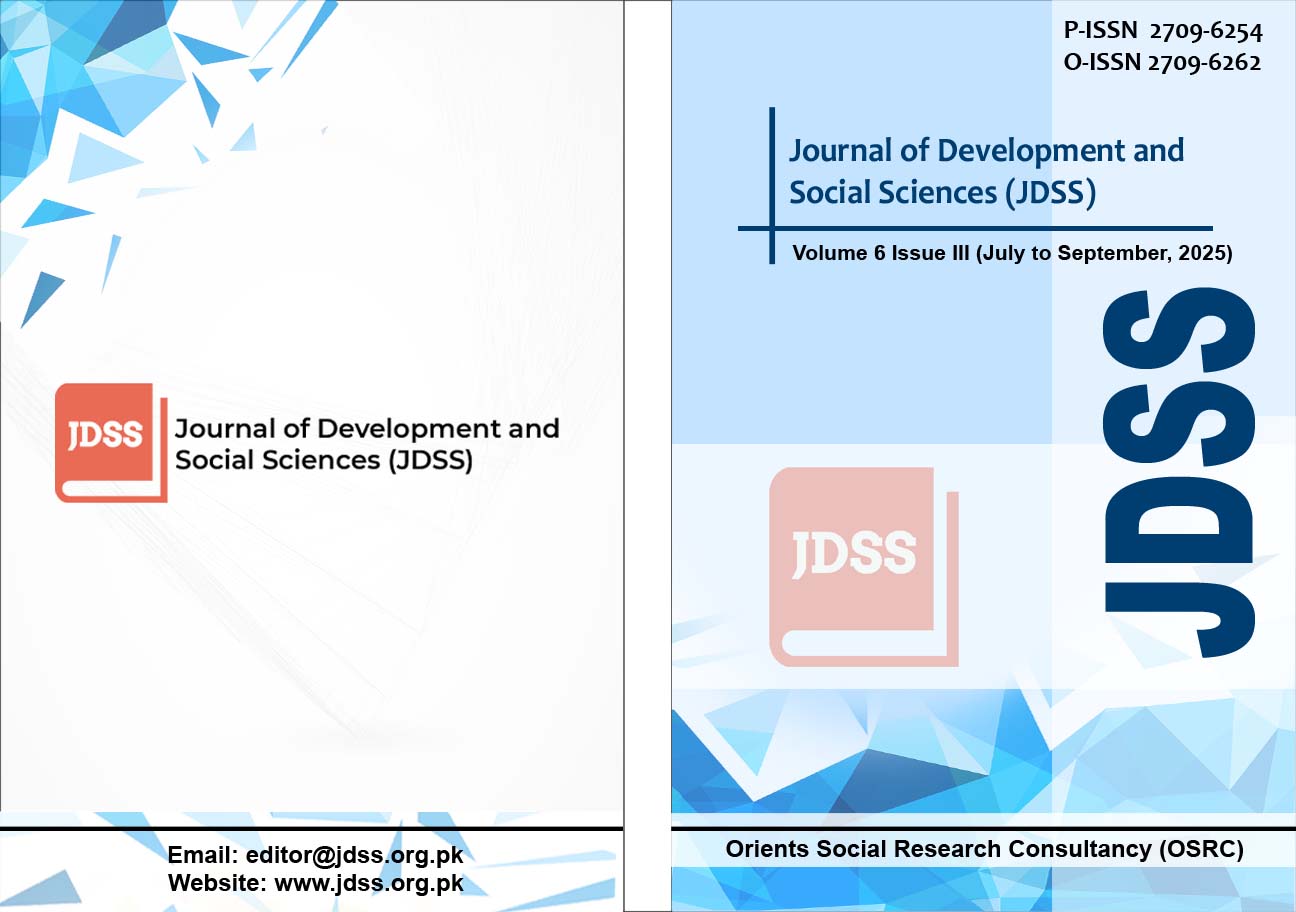Beyond Infrastructure: Socio-Economic Transformation and Cultural Exchange through CPEC
DOI:
https://doi.org/10.47205/jdss.2025(6-III)61Keywords:
China–Pakistan Economic Corridor (CPEC), Belt and Road Initiative (BRI), Socio-Cultural Exchange, Confucius Institutes, Regional Development, Soft PowerAbstract
The objective of this research is to analyze the China–Pakistan Economic Corridor through a social sciences lens, examining how infrastructure investment, regional connectivity, and trade integration intersect with issues of nation-building, cultural exchange, and development equity. This research examines that while CPEC promises significant contributions to Pakistan’s economy—particularly in energy security, foreign direct investment, and regional uplift—it also functions as a site of soft power projection, evident in educational exchanges, language promotion, and cultural diplomacy. This research shows that the China–Pakistan Economic Corridor (CPEC), a flagship project of China’s Belt and Road Initiative (BRI), has emerged as both an economic opportunity and a socio-political phenomenon in the region and beyond. The study highlights the dual potential of CPEC: to foster socio-economic transformation and cross-cultural understanding, The research is signifant as it argues that the Project is not only an economic corridor but also incorporates far-reaching implications for Pakistan’s future. The research recommends that, while the China Pakistan Economic Corridor has immense economic potential, there is a greater need to explore social and cultural aspects of the Corridor to reap its benefits to both countries and the region.
Downloads
Published
Details
-
Abstract Views: 190
PDF Downloads: 94
How to Cite
Issue
Section
License
Copyright (c) 2025 Journal of Development and Social Sciences

This work is licensed under a Creative Commons Attribution-NonCommercial 4.0 International License.

ORIENTS SOCIAL RESEARCH CONSULTANCY (OSRC) & Journal of Development and Social Sciences (JDSS) adheres to Creative Commons Attribution-Non Commercial 4.0 International License. The authors submitting and publishing in JDSS agree to the copyright policy under creative common license 4.0 (Attribution-Non Commercial 4.0 International license). Under this license, the authors published in JDSS retain the copyright including publishing rights of their scholarly work and agree to let others remix, tweak, and build upon their work non-commercially. All other authors using the content of JDSS are required to cite author(s) and publisher in their work. Therefore, ORIENTS SOCIAL RESEARCH CONSULTANCY (OSRC) & Journal of Development and Social Sciences (JDSS) follow an Open Access Policy for copyright and licensing.







